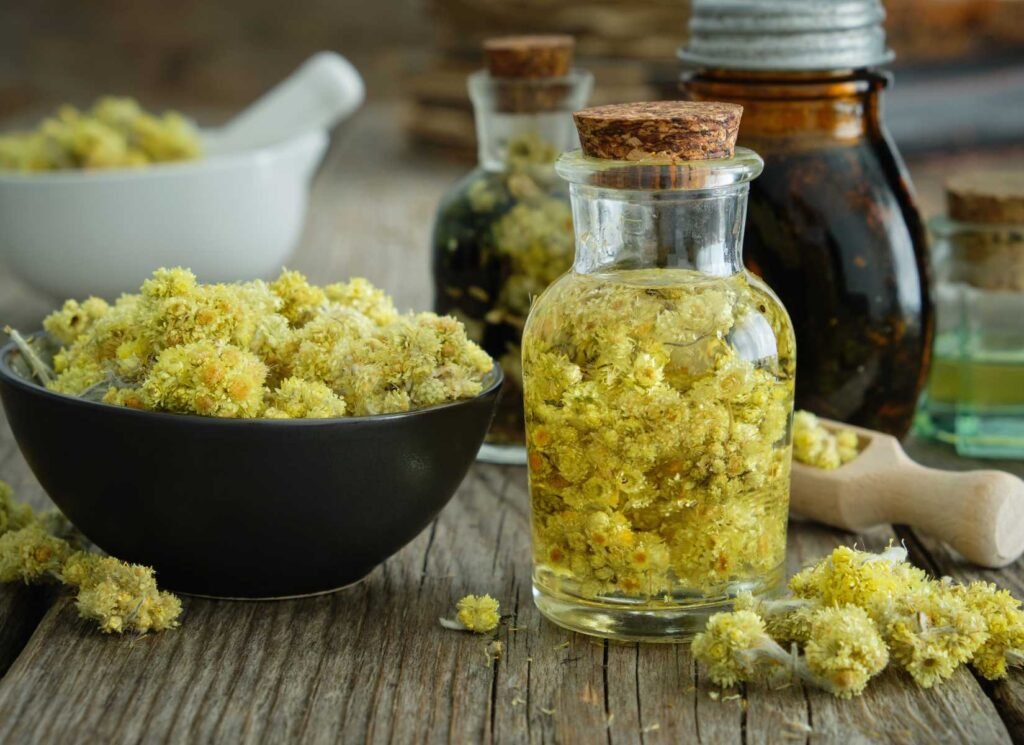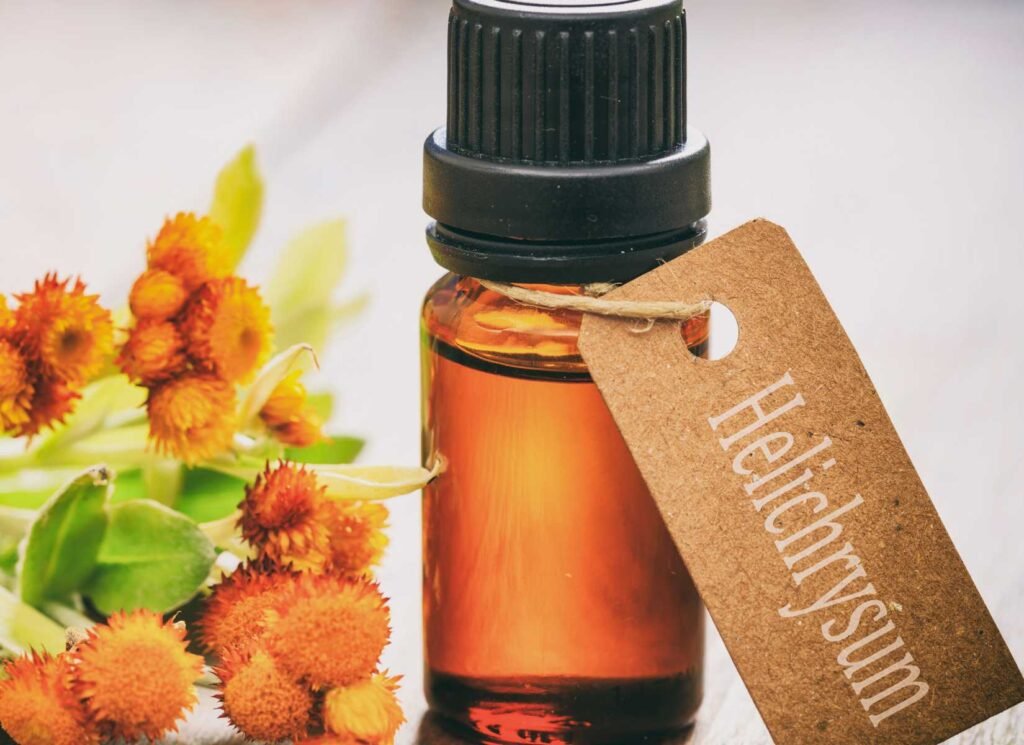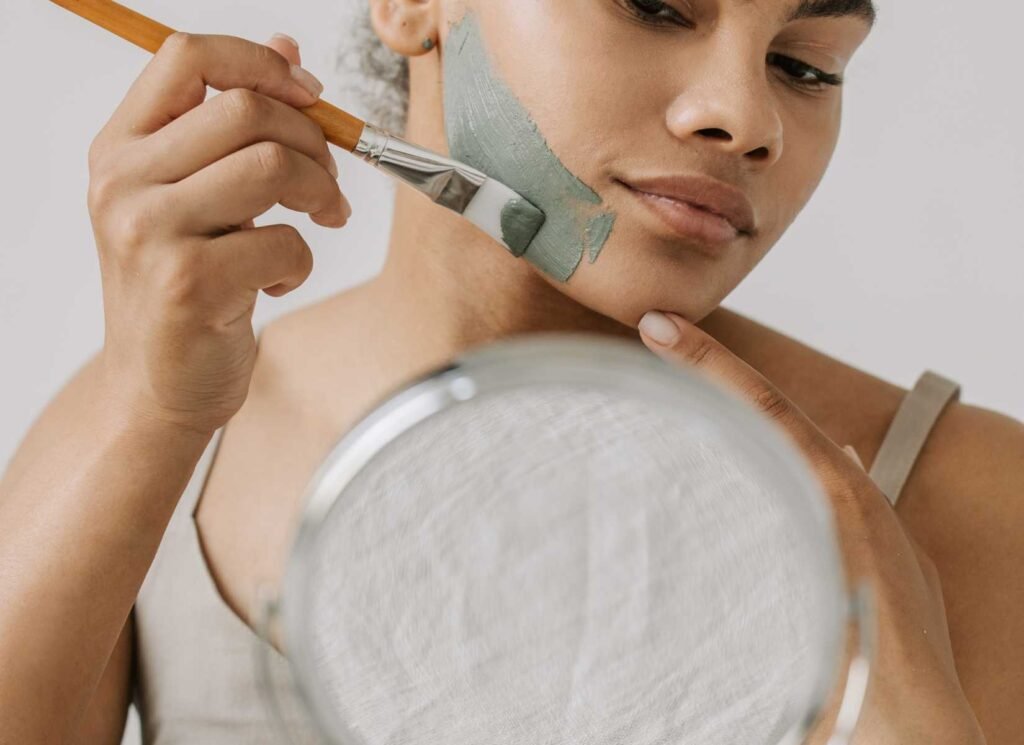Helichrysum, a word that may sound unfamiliar to many, holds a treasure trove of skincare benefits and versatile applications. This remarkable plant, scientifically known as Helichrysum italicum, is a flowering herb native to the Mediterranean region. It has been revered for centuries for its numerous healing properties, particularly in the realm of skincare. In this informative blog post, we will delve deep into the world of helichrysum, exploring what it is, its remarkable skin benefits, and the various ways you can incorporate it into your skincare routine. Whether seeking to rejuvenate your skin, soothe irritations, or enhance your overall complexion, helichrysum may be the natural remedy you’ve been searching for.
What is Helichrysum?
Helichrysum, often called the “Immortelle” or “Everlasting” plant, is a member of the Asteraceae family. It boasts vibrant yellow flowers with a distinctive, earthy aroma. What sets helichrysum apart is its unique ability to retain its vibrant color and medicinal properties even after being harvested and dried, hence the name “Everlasting.” This remarkable plant has been used in traditional medicine for centuries, dating back to ancient Greece and Rome.

Helichrysum essential oil, the primary extraction form, is obtained through the steam distillation of the plant’s flowers and leaves. The resulting oil is a potent elixir packed with beneficial compounds, including antioxidants, anti-inflammatory agents, and antimicrobial properties.
Skin Benefits of Helichrysum
- Anti-Aging Properties: Helichrysum essential oil is a powerhouse of antioxidants, such as flavonoids and terpenoids. These antioxidants combat free radicals responsible for premature aging, helping reduce the appearance of fine lines, wrinkles, and age spots. It promotes a youthful complexion with a radiant glow.
- Skin Healing: Helichrysum is renowned for its exceptional wound-healing properties. It can expedite the healing of wounds, burns, and scars due to its remarkable regenerative effects on skin tissue. Additionally, it minimizes scar tissue formation, leaving your skin smoother and more uniform.
- Anti-Inflammatory: The anti-inflammatory compounds in helichrysum essential oil make it an excellent choice for calming skin irritations, redness, and inflammation caused by conditions like eczema and psoriasis. Regular use can significantly relieve itching and discomfort, promoting overall skin comfort.
- Hydration and Moisturization: Helichrysum essential oil helps lock in moisture and improves skin hydration. This is especially beneficial for individuals with dry or sensitive skin, as it provides a natural, non-greasy way to nourish and hydrate the skin deeply.
- Acne Control: The antimicrobial and anti-inflammatory properties of helichrysum can also aid in controlling acne breakouts. It helps to unclog pores, reduce inflammation, and prevent the growth of acne-causing bacteria. This can lead to clearer, healthier-looking skin.
In exploring helichrysum’s skin benefits, it’s essential to delve into its intriguing relationship with diketones. These components are pivotal in the plant’s ability to address various skin concerns and enhance its reputation as a skincare superstar.
Understanding Diketones
Diketones are organic compounds found in various plants, including helichrysum. The most notable diketone in helichrysum essential oil is called italidiones. These compounds possess a unique structure that allows them to interact with enzymes involved in melanin synthesis, specifically tyrosinase.

Tyrosinase Activity and Skin Pigmentation
Tyrosinase is a critical enzyme in melanin production, responsible for the pigmentation of the skin, hair, and eyes. While melanin is a natural defense mechanism against harmful UV radiation, its overproduction can lead to skin issues such as hyperpigmentation, age spots, and melasma.
The Role of Diketones in Skin Care
Helichrysum’s diketones, particularly italidiones, have been studied for their ability to modulate tyrosinase activity. By inhibiting this enzyme, helichrysum helps regulate melanin production, which can lead to several notable skin benefits:
- Hyperpigmentation Reduction: Diketones in helichrysum essential oil help reduce hyperpigmentation by slowing melanin production. This is particularly beneficial for those dealing with uneven skin tone and dark spots caused by sun exposure or skin conditions.
- Brighter Complexion: Regular use of helichrysum-infused products or helichrysum essential oil can lead to a brighter complexion. By inhibiting excessive melanin production, it promotes a more even skin tone, giving your face a radiant and youthful appearance.
- Fade Age Spots: Age spots, also known as liver spots or sunspots, are often the result of prolonged sun exposure. Helichrysum’s ability to mitigate tyrosinase activity can help fade these spots, contributing to a more youthful and even skin texture.
- Melasma Management: Melasma is a skin condition characterized by dark facial patches, particularly in women. Helichrysum’s tyrosinase-inhibiting properties can be beneficial in managing and lightening these patches.
- Sun Damage Repair: Exposure to the sun’s harmful UV rays can accelerate melanin production, leading to sunspots and other signs of photodamage. Helichrysum can assist in repairing and preventing further damage by reducing tyrosinase activity.
Allergies and Safety
While helichrysum is generally safe for topical use, it’s essential to be aware of potential allergies. Before applying helichrysum essential oil to your skin, conduct a patch test by diluting a small amount in a carrier oil and applying it to a small area of your skin. Wait 24 hours to check for adverse reactions, such as redness, itching, or irritation. If you have a history of allergies or sensitive skin, consult a dermatologist or healthcare professional before incorporating helichrysum into your skincare routine.
Ways to Use Helichrysum for Skin
Now that we’ve explored the impressive skin benefits of helichrysum let’s delve into the various ways you can incorporate this natural wonder into your skincare routine:

- Helichrysum Essential Oil: This is the most potent form of helichrysum and can be diluted with a carrier oil (like coconut or jojoba oil) for direct application on the skin. Apply a few drops to your face, focusing on problem areas, and gently massage in upward motions. This method is excellent for targeting specific skin concerns and delivering the full range of helichrysum’s benefits.
- Helichrysum-Infused Products: Many skincare brands offer products infused with helichrysum essential oil. Look for cleansers, serums, moisturizers, and even sunscreens that contain this powerful ingredient for daily skincare. These products provide a convenient way to incorporate helichrysum into your routine.
- DIY Face Masks: Create a nourishing face mask by mixing helichrysum essential oil with ingredients like yogurt, manuka honey, or aloe vera gel. The helichrysum’s
antihealthy-aging and healing properties will complement these natural ingredients, revitalizing your skin. Apply the mask to your face, leave it on for 15-20 minutes, and rinse off with lukewarm water for a refreshed complexion. - Helichrysum Hydrosol: Helichrysum hydrosol is a gentler option for those with sensitive skin. It can be a toner to balance pH levels, reduce redness, and hydrate the skin. Mist it onto your face after cleansing, or soak a cotton pad and gently apply it to your skin.
- Massage Oil: Combine helichrysum essential oil with a carrier oil, such as sweet almond or grapeseed oil, for a luxurious massage experience. This not only soothes sore muscles but also allows the beneficial properties of helichrysum to penetrate deeply into your skin, leaving it nourished and relaxed.
- Spot Treatment: For acne or blemishes, apply a diluted drop of helichrysum essential oil directly to the affected area using a cotton swab. Its antimicrobial properties can help speed up the healing process and reduce the appearance of blemishes. Be cautious with this method, as applying undiluted essential oil directly to the skin can be irritating.
Conclusion
Incorporating helichrysum into your skincare routine can be a transformative experience. This “Everlasting” plant, with its exceptional healthy-aging, healing, and soothing properties, can work wonders for your skin. However, it’s crucial to exercise caution, especially if you have sensitive skin or a history of allergies. Perform a patch test and consult a dermatologist to ensure safe usage.
Helichrysum is not just a skincare ingredient; it’s a natural remedy deeply rooted in history, offering a holistic approach to skin health. By embracing helichrysum, you are tapping into the ancient wisdom of this remarkable plant and unlocking the secret to healthier, more radiant skin. Whether you use it as an essential oil, in skincare products, or in DIY treatments, helichrysum’s benefits are bound to leave your skin feeling rejuvenated, refreshed, and beautifully radiant.
Is this interesting? Tell us in the comments.
